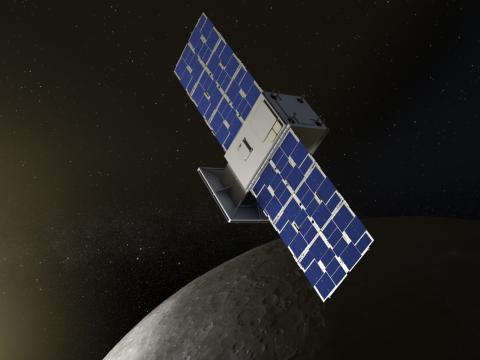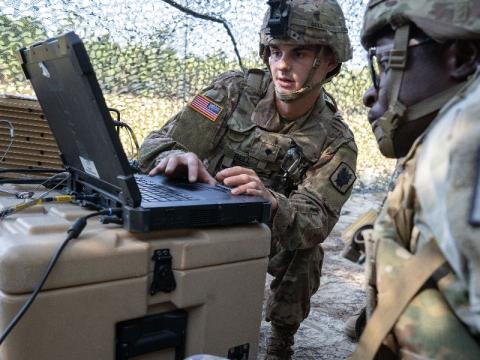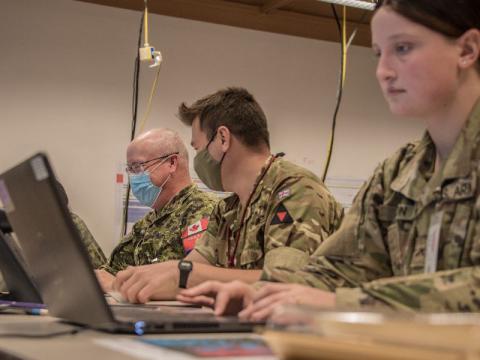Pandemic Illustrates New Path to Conflict
(Part two of a three-part series)
As the world watches the COVID-19 coronavirus wreak havoc, the potential of a man-made pandemic is offering its own allure to bad actors, ranging from nation-states to rogue organizations. Even if an organization lacks the wherewithal to develop or deploy a biological weapon, lessons already learned are demonstrating that a pandemic offers great opportunities for mayhem and profit, a national security expert says.
Preventing or mitigating the effect of a coordinated pandemic-asymmetric attack will require multiple efforts. The intelligence community must improve its detection capabilities to discern when diseases are emerging and how adversaries are taking advantage of them. And, the government must work with the medical community to explore new ways of developing vaccines along with innovative biological tools to combat a threat when it emerges.
Biosecurity has been in many nations’ plans for more than a century, points out James Canton, CEO and chairman, The Institute for Global Futures. Nation-states, terrorist groups and rogue organizations have launched attacks using a variety of biological agents over the years, and changes in those biological tools have compelled security experts to alter their plans for detection, mitigation and response.
The threat of a weaponized bioagent has long been part of national security dialogue, Canton notes. What has been absent is an example of a large-scale event. Recent biological attacks have taken the form of small, idiosyncratic events such as the Rajneeshee salmonella bioterror attack on The Dalles, Oregon, and the Aum Shinrikyo sarin attack on the Tokyo subway.
“We have a lot of evidence that this is a risk factor and has been in the past,” he continues. The implications of biosecurity have been obvious for some time, he points out. Ebola, the original SARS outbreak and the Zika virus are only recent examples. The possibility of weaponizing a biological agent such as COVID-19 is not as likely, Canton offers. Yet, virtually any virus in the wild could be weaponized.
“If this is not a wakeup call, then there never was one,” Canton states.
The best defense against a biological attack from a nation-state might well be deterrence, Canton says. This would include better knowledge of virus genomes and developing a capability set that anticipates offsets and rethinks the paradigm for developing vaccines and treatments.
He relates that the past five years have seen developments in synthetic biology and the new genetic engineering tool CRISPR-Cas9, along with advances in artificial intelligence. Tools now exist that can help develop a repository of biological and antiviral agents to help rapid vaccine development and deployment. “We need to develop that capability,” he states.
“This pandemic should elevate not just our national security posture to include biosecurity, but also there should be a very active, highly fundable private and public consortium the level of the Manhattan Project,” Canton states. A few days after he made that statement to SIGNAL Magazine, the Wall Street Journal reported that a group of billionaires and scientists are coming together in exactly that type of effort.
The United States also needs to rethink the drug development model, he says. Spending more than $1 billion and taking more than 10 years to gain approval of an effective drug is a model that must be transformed. Capabilities such as supercomputing, modeling and clinical development must be leveraged for rapid trials and development, he emphasizes. “You don’t want to have a couple million people potentially die because the research and clinical trial process to get certification is so ridden [with bureaucracy]. We need a supply chain transformation to create rapid drug development and deployment through clinical trials.”
But the government must guard against these efforts being undermined by adversaries and other opportunists. Hackers already have gone after the clinical trials of early COVID-19 vaccines under development, Canton reports. “There will be, and there are today, state and non-state actors … that will exploit this moment of vulnerability in our nation—and are exploiting it now,” he says. “We know what’s going on today. We see the information warfare and cyber attacks, the proliferation of this narrative about where the virus came from … this is a great live-action opportunity to be able to look at how rogues and dark networks are working together to exploit the situation.”










Comments